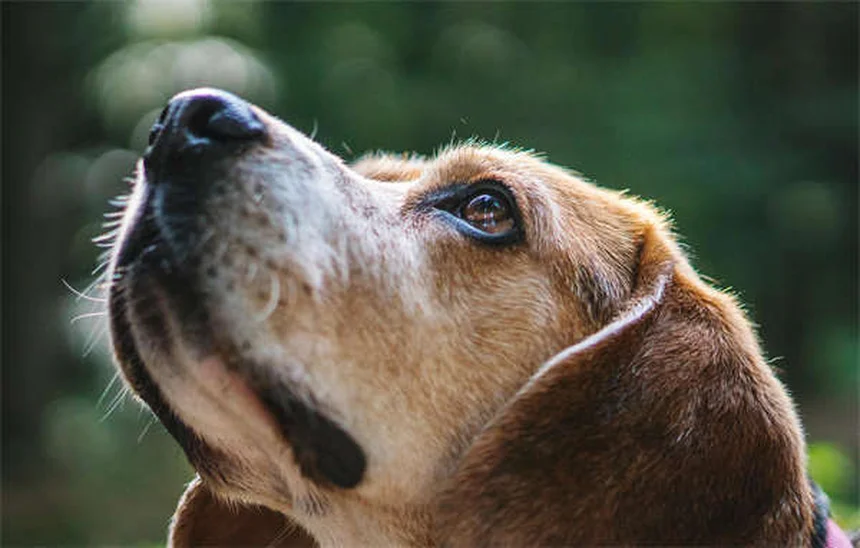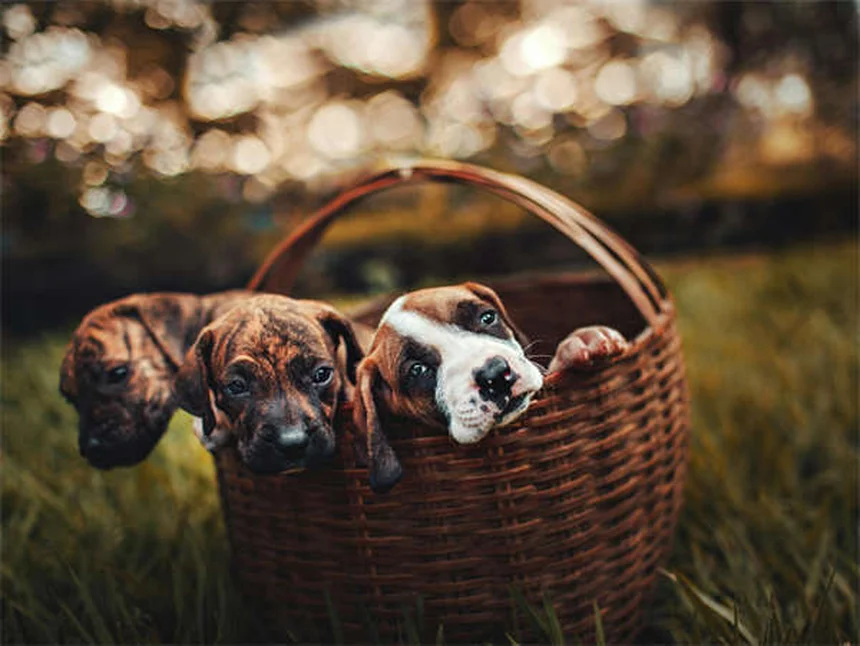What's the best diet for your guinea pig? The answer is simple: a hay-based diet with fresh veggies and vitamin C is key to keeping your furry friend healthy and happy. I've been caring for guinea pigs for years, and let me tell you - their nutritional needs are very different from what pet stores often suggest. Those colorful pellet mixes and yogurt drops? They're basically junk food for these little herbivores!
Here's the deal: guinea pigs evolved to eat tough, fibrous plants in the wild, not the sugary treats we're tempted to give them. Their digestive systems and constantly-growing teeth require specific foods to function properly. The good news? Feeding your guinea pig right isn't complicated once you know the basics. In this guide, I'll walk you through everything from the essential hay varieties to the perfect veggie portions - plus some common mistakes to avoid (trust me, I've made them all so you don't have to!).
E.g. :5 Common Chinchilla Health Problems Every Owner Should Know
- 1、Understanding Your Guinea Pig's Natural Diet
- 2、Building the Perfect Daily Menu
- 3、The Vitamin C Situation
- 4、Hydration Station
- 5、Pellet Perplexities
- 6、Final Feeding Tips
- 7、The Social Aspect of Guinea Pig Dining
- 8、Seasonal Eating Habits
- 9、The Psychology of Foraging
- 10、Special Dietary Considerations
- 11、The Farmer's Market Advantage
- 12、FAQs
Understanding Your Guinea Pig's Natural Diet
What Wild Guinea Pigs Ate
Ever wonder why your guinea pig goes crazy for fresh veggies? Their ancestors in the Andes mountains survived on tough grasses and fibrous plants. Unlike us humans who can adapt to new foods quickly, guinea pigs' digestive systems haven't changed much since their wild days.
Here's the funny thing - while wild guinea pigs ate boring (but healthy) grasses all day, we've turned them into little dessert monsters! Those yogurt drops and fruit treats? Total junk food for these furry potatoes. Their bodies simply aren't built to handle sugary snacks, no matter how much they beg with those adorable eyes.
Why Their Teeth Matter
Did you know guinea pig teeth never stop growing? That's right - they're like tiny, furry beavers! Without proper chewing material, their teeth can overgrow and cause serious health issues. This is why hay should be about 80% of their diet - it keeps those chompers in check while providing essential fiber.
Think of it this way: feeding your guinea pig only soft foods would be like giving a child only milkshakes - sure, they'd love it, but their teeth and health would suffer. Always have fresh hay available - it's nature's toothbrush and digestive aid all in one!
Building the Perfect Daily Menu
 Photos provided by pixabay
Photos provided by pixabay
The Hay Foundation
If guinea pigs had a food pyramid, hay would be the entire base! Timothy hay is the gold standard, but mixing different types keeps things interesting. Here's a quick comparison of popular hay options:
| Hay Type | Calcium Level | Best For |
|---|---|---|
| Timothy | Low | Daily staple |
| Orchard Grass | Low | Variety |
| Oat Hay | Medium | Occasional treat |
| Alfalfa | High | Young or pregnant pigs only |
Pro tip: Store hay in a cool, dry place to maintain freshness. And don't be afraid to get your nose in there - good hay should smell sweet and grassy, not musty or damp.
Veggie Power Hour
Now for the fun part - veggies! Aim for about one cup per pig per day, focusing on leafy greens and vitamin C-rich options. Some guinea pig favorites include:
- Bell peppers (all colors)
- Romaine lettuce
- Cilantro
- Carrot tops (not too many carrots though!)
- Dandelion greens
Remember when introducing new foods: go slow! Their sensitive tummies need time to adjust. I made the mistake of giving too much kale once - let's just say the cage cleaning that followed wasn't pleasant!
The Vitamin C Situation
Why It's Crucial
Here's something wild - guinea pigs are like tiny pirates who can get scurvy! They can't produce their own vitamin C, so we need to provide it through their diet. The good news? Many of their favorite veggies are packed with this essential nutrient.
Red bell peppers are like nature's vitamin C pills - one slice provides more than enough for a day. Other great sources include parsley, kale, and broccoli. Just don't overdo the broccoli unless you want some... musical performances from your piggy later!
 Photos provided by pixabay
Photos provided by pixabay
The Hay Foundation
While I prefer natural sources, sometimes supplements are needed. Never put vitamin C in their water - it can make them stop drinking entirely! Instead, try these options:
- Children's vitamin C tablets (check dosage with your vet)
- Special guinea pig vitamin C treats
- Fresh veggie "shots" - a small piece of pepper or parsley
Pro tip: Store vitamin C supplements in the fridge - they degrade quickly at room temperature. And always check expiration dates!
Hydration Station
Water Wisdom
Guinea pigs drink about 100ml of water per kilogram of body weight daily. That might not sound like much, but for a tiny creature, it's like us drinking several gallons!
Some pigs prefer bottles, others like bowls. My guy Winston refused to drink from anything but a miniature teacup - spoiled much? Whatever you choose, change the water at least twice daily to keep it fresh and clean.
Signs of Dehydration
Watch for these red flags:
- Dry, sticky gums
- Sunken eyes
- Less pee in the cage
- Lethargy
If you suspect dehydration, offer wet veggies like cucumber (peeled) and contact your vet immediately. Better safe than sorry when it comes to these little water balloons!
Pellet Perplexities
 Photos provided by pixabay
Photos provided by pixabay
The Hay Foundation
Here's a controversial opinion - most guinea pigs don't need pellets at all. That's right, the stuff marketed as "complete guinea pig food" is often unnecessary if you're feeding proper hay and veggies.
If you do use pellets, limit to 1 tablespoon daily and look for:
- Timothy-based (not alfalfa)
- No colorful bits or seeds
- Added stabilized vitamin C
- Fresh (check that expiration date!)
The Obesity Problem
Ever seen a guinea pig try to run on a wheel with a belly full of pellets? It's like watching a furry bowling ball! Overweight pigs develop all sorts of health issues, from arthritis to heart problems. Stick to the 1 tbsp limit - their waistlines will thank you.
Remember: pellets should be the sprinkles on top of their dietary sundae, not the main course. Focus on quality hay and fresh veggies instead!
Final Feeding Tips
Mealtime Routine
Guinea pigs thrive on routine - they'll actually learn to recognize feeding time! Here's my daily schedule:
- Morning: Fresh hay refill + 1/2 cup veggies
- Noon: Small veggie snack (if home)
- Evening: More hay + remaining 1/2 cup veggies + pellets (if using)
They'll start wheeking (that adorable squeal) when they hear the fridge open or the hay bag rustle. It's like having tiny, furry alarm clocks!
Foods to Avoid
Some foods are downright dangerous. Never feed:
- Iceberg lettuce (no nutrition, can cause diarrhea)
- Potatoes or other nightshades
- Dairy products
- Meat (they're strict vegetarians!)
- Chocolate (duh)
When in doubt, check with your vet or a reliable guinea pig nutrition guide. Their little bodies are sensitive, so better safe than sorry!
Now go forth and feed your furry friend like the nutrition expert you've become! Just don't be surprised when they still act like they're starving five minutes after eating - some things never change.
The Social Aspect of Guinea Pig Dining
Mealtime as Bonding Time
Did you know guinea pigs are actually social eaters? In the wild, they munch together for safety and companionship. When you sit with your piggy during meals, you're tapping into this natural behavior. I've found my Winston becomes much more affectionate when I hand-feed him his veggies!
Here's a fun experiment - try placing your hand flat with food on your palm. Many guinea pigs will cautiously approach and eat right from your hand. It's like having a tiny, furry vacuum cleaner! This builds trust and helps shy pigs come out of their shells. Just watch those little teeth - they don't mean to nibble fingers, but accidents happen!
The Pecking Order at the Food Bowl
If you have multiple guinea pigs, you've probably noticed one always gets first dibs at dinner. That's because guinea pigs establish clear hierarchies - the dominant pig eats first, then the others follow. It's nature's way of keeping peace in the herd.
To prevent bullying, I recommend multiple food stations. Place hay in several spots around the cage and use separate veggie plates if needed. My two pigs have completely different eating styles - Winston gobbles everything immediately while Oliver likes to stash food in his "secret" corner (which is actually just behind his igloo).
Seasonal Eating Habits
Summer vs Winter Preferences
Just like us, guinea pigs change their eating habits with the seasons! During hot weather, they tend to prefer watery veggies like cucumber and zucchini to stay hydrated. I always notice my pigs eating less hay when it's warm out - probably because it's like chewing on dry straw in the desert!
Come winter, they crave more calorie-dense foods. This is when I'll occasionally add a small piece of banana (high in sugar, so very rare!) or some extra pellets. Their little bodies know what they need to stay warm. One hilarious winter behavior - they'll often drag hay into their hideouts to create warm, edible nests!
Holiday Treats with Caution
We all want to include our pets in holiday celebrations, but guinea pigs have sensitive systems. Pumpkin is actually a great October treat (seeds removed, of course), while small pieces of watermelon rind can be refreshing in July. Just remember - no Thanksgiving turkey leftovers or Christmas cookies for these vegetarians!
Here's a safe holiday menu I've created for my pigs:
| Holiday | Safe Treat | Portion Size |
|---|---|---|
| Valentine's Day | Heart-shaped red bell pepper | 1 slice |
| Easter | Dandelion greens | Small handful |
| Halloween | Pumpkin flesh (no skin) | 1 teaspoon |
| Christmas | Parsley sprig "tree" | 2-3 leaves |
They may not understand the holiday, but they sure appreciate the special snacks!
The Psychology of Foraging
Making Meals More Engaging
Ever notice how your guinea pig seems happiest when "working" for food? Foraging is mentally stimulating for these intelligent creatures. I've started hiding veggies around Winston's playpen, and watching him sniff them out is better than TV!
Simple foraging toys you can make at home:
- Toilet paper rolls stuffed with hay
- Paper bags with veggie surprises inside
- Cardboard boxes with multiple entry points
Pro tip: Rotate different foraging toys to keep things interesting. My pigs get bored with the same old thing - just like kids with toys!
The Joy of Discovery
There's something magical about watching a guinea pig discover a new food. The cautious sniffing, the tentative nibble, then the excited munching when they approve! Introducing new foods slowly isn't just about digestion - it's about respecting their natural caution.
I'll never forget when I first offered Winston a blueberry. He looked at it like it was an alien, nudged it with his nose, then suddenly popped it like a balloon! Now he does a little happy dance whenever he sees the blueberry container. These small moments make all the research and meal prep worthwhile.
Special Dietary Considerations
Senior Guinea Pig Nutrition
As guinea pigs age, their dietary needs change just like ours do. Older pigs often need softer foods as their teeth may wear down. I've found that soaking pellets in water or offering steamed veggies (cooled, of course) can help senior pigs maintain weight.
Important nutrients for aging guinea pigs:
- Extra vitamin C (immune support)
- More easily digestible fiber (like oat hay)
- Increased hydration (wet veggies or water-rich fruits)
Have you noticed your older pig drinking less water? This is common, and adding cucumber or watermelon (in moderation) can help keep them hydrated without forcing them to drink more.
Picky Eaters and Food Strikes
Guinea pigs can be stubborn about food - trust me, I've dealt with Winston's week-long boycott of carrots! The key is persistence without pressure. Keep offering rejected foods in small amounts alongside favorites. Often, they'll eventually come around.
Common reasons for food rejection:
- The food was too cold (try room temperature)
- It was cut differently than usual (pigs can be texture-sensitive)
- They associate it with a past stomach upset
- They're just being divas (most likely reason!)
Remember - a healthy guinea pig won't starve itself. If they're truly not eating, that's vet visit time, not negotiation time!
The Farmer's Market Advantage
Why Freshness Matters
You wouldn't eat wilted salad every day, and neither should your guinea pig! Freshness dramatically impacts nutrient content. Those bell peppers sitting in your fridge for two weeks? They've lost much of their vitamin C punch.
I've started hitting my local farmer's market for piggy produce. The difference is noticeable - Winston goes crazy for just-picked greens compared to grocery store versions. Plus, you can often find interesting varieties like purple carrots or watermelon radishes that add excitement to their diet.
Seasonal and Local Benefits
Eating seasonally isn't just trendy for humans - it's great for guinea pigs too! In-season produce is at its nutritional peak and often more affordable. Here's what I look for each season:
- Spring: Tender young greens
- Summer: Juicy cucumbers and peppers
- Fall: Squashes and root veggies
- Winter: Hardy greens like kale
Bonus - seasonal eating reduces your carbon footprint. Your guinea pig might not care about the environment, but you'll feel good about making eco-friendly choices!
E.g. :Feeding Guinea Pigs | VCA Animal Hospitals
FAQs
Q: How much hay should my guinea pig eat daily?
A: Guinea pigs should have unlimited access to fresh hay at all times. I recommend filling their hay rack completely every morning and topping it up throughout the day. Think of hay as about 80% of their total diet - it's that important! Not only does it provide essential fiber for digestion, but it also keeps their constantly-growing teeth properly worn down. My piggies go through about a large handful each per day. Pro tip: Try mixing different hay types like timothy and orchard grass to keep things interesting while maintaining nutritional balance.
Q: What vegetables are safe for guinea pigs to eat?
A: The best veggies for guinea pigs are leafy greens and vitamin C-rich options. I feed my crew about 1 cup of mixed veggies per pig daily, with favorites being romaine lettuce, bell peppers (all colors!), cilantro, and carrot tops. Remember to introduce new veggies slowly to avoid digestive upset. Avoid iceberg lettuce - it's basically crunchy water with no nutrition. And go easy on high-calcium veggies like spinach - too much can cause bladder stones. When in doubt, check with your vet about portion sizes!
Q: Why is vitamin C so important for guinea pigs?
A: Here's the crazy thing - guinea pigs can't produce their own vitamin C, just like humans with scurvy! They need about 10-30 mg per kg of body weight daily to stay healthy. I get this through fresh veggies - red bell peppers are my go-to since one slice provides their daily needs. You can use supplements if needed, but never add vitamin C to their water (they might stop drinking). Watch for signs of deficiency like rough coat or reluctance to move, and consult your vet immediately if you notice these symptoms.
Q: Are guinea pig pellets necessary in their diet?
A: Honestly? Most guinea pigs don't need pellets at all if they're getting proper hay and veggies. Many pellets are alfalfa-based (too high in calcium) or packed with unhealthy extras. If you do use pellets, limit to 1 tablespoon daily of a timothy-based variety with stabilized vitamin C. I made the mistake of overfeeding pellets early on - let's just say my chunky piggies had trouble fitting through their tunnel toys! Focus on quality hay and fresh foods instead.
Q: How can I tell if my guinea pig is eating properly?
A: Watch for these signs of good nutrition: consistent appetite (they should be excited for mealtime!), normal poop (firm and oval-shaped), clean teeth (not overgrown), and good energy levels. Weigh your pig weekly - sudden weight loss is a red flag. Also check that they're eating their hay (not just picking out the "good bits"). If you notice changes in eating habits, consult your vet ASAP - guinea pigs can go downhill fast without proper nutrition!


